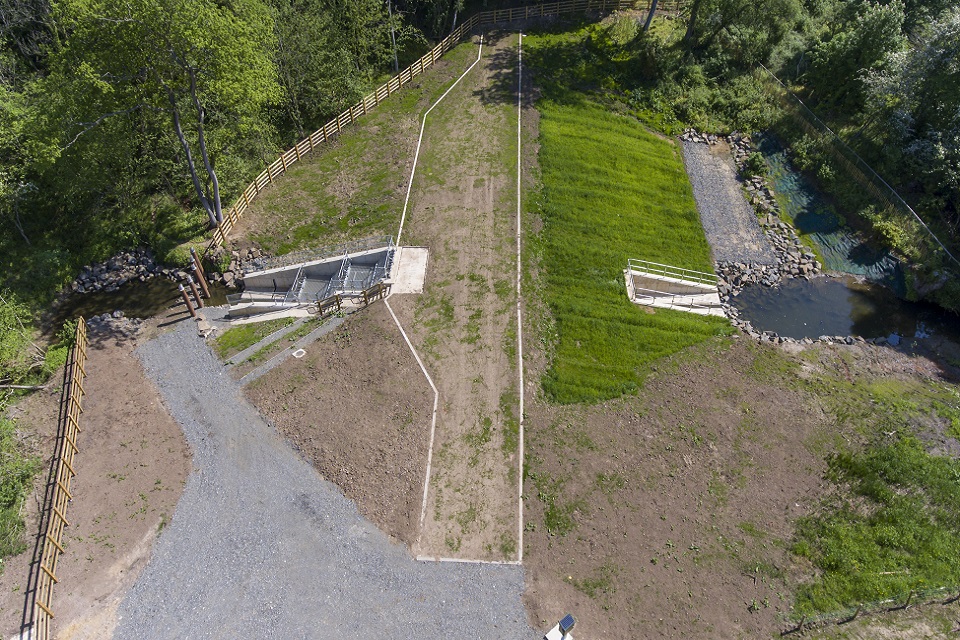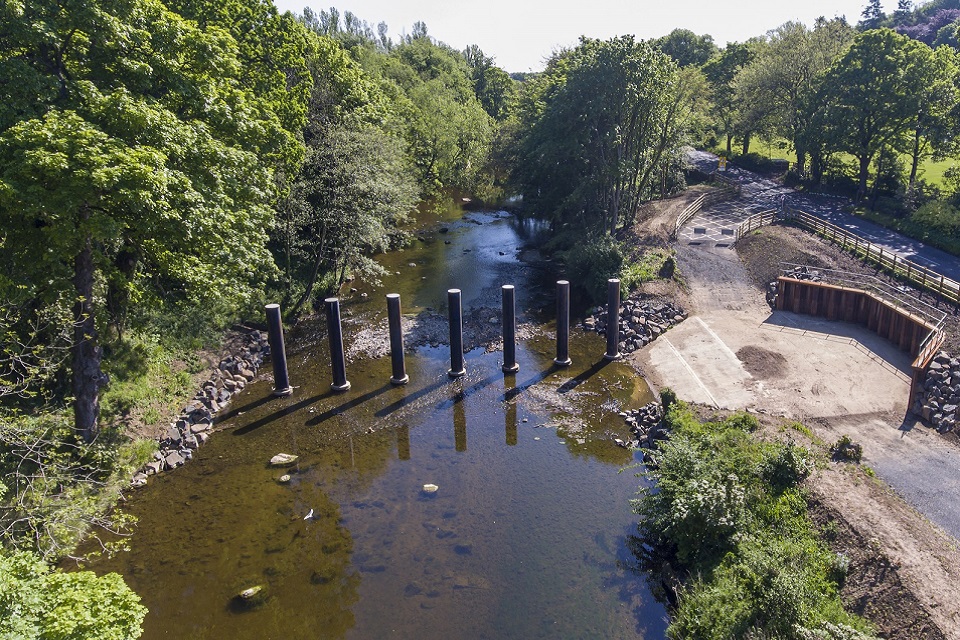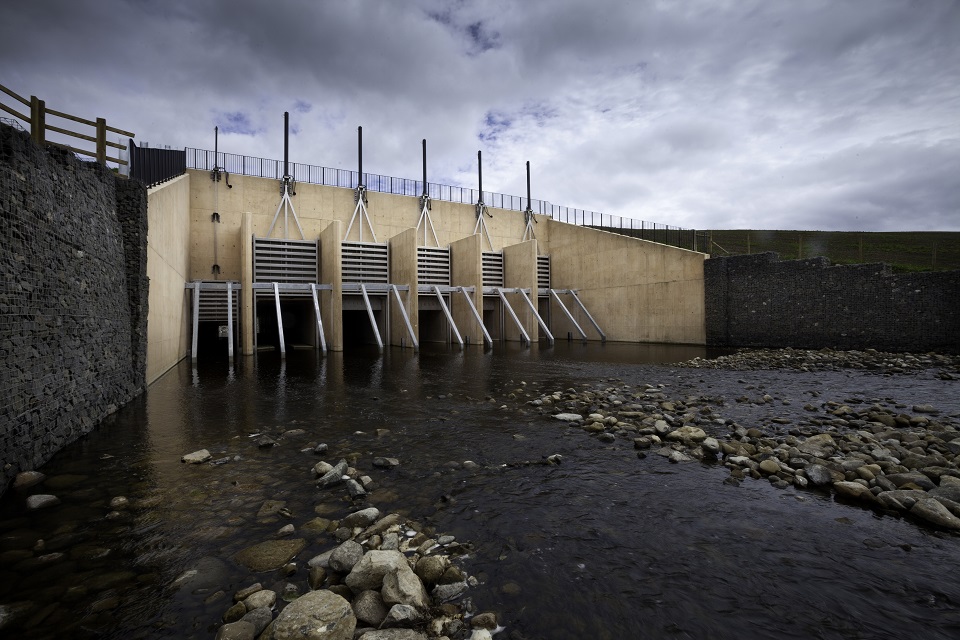Press release: £27million Northumberland flood scheme is complete
The final part of Morpeth’s £27million flood alleviation scheme is complete.
Work to construct Cotting Burn dam was the last piece of work on the multi-million pound joint Environment Agency and Northumberland County Council flood scheme.
A drop-in event to thank residents for their patience throughout the construction took place on Friday 21 July.
Cotting Burn dam has been renamed “The Hargreaves Dam” in memory of RFCC Chairman Jon Hargreaves, who sadly passed away in October last year.
The dam works alongside other flood protection measures to reduce flood risk to around 1,000 properties in Morpeth.

New defences
To reduce the risk of flooding from the River Wansbeck, in-town defences were completed first, followed by the large upstream storage area at Mitford, which has already operated to protect the community. This year, tree poles were installed into the river near to Lowford Bridge to prevent large debris from reaching the town centre.
The construction of the new dam and storage area, which reduces the risk of flooding from the Cotting Burn, was finished in May and it is now operational.
It reduces the volume of water flowing downstream in large events. The screen on the dam also prevents debris from Cotting Wood from reaching the culvert and causing blockages.

Separate work by Northumberland County Council to address surface water flooding at several locations in the town is underway and scheduled for completion by March 2018 at a cost of £1m.
This is being financed through a government grant from the Environment Agency and county council funding.
Scheme is ‘biggest in the north east’
The Environment Agency’s Alan Cadas, Operations Manager in the North East, said:
The Morpeth flood scheme is the biggest in the North East and boasts one of the largest flood storage areas the Environment Agency has ever built.
But this work on the Cotting Burn is equally important and works together with the other features to ensure Morpeth is protected from both the burn and the River Wansbeck.
This has been a great partnership involving local residents, who have played, and continue to play, a vital role in the success of the scheme. It shows that by working together with others we can create long term solutions to reduce the risk of flooding in our communities.

Partnership project
Northumberland County Council has played a key role, contributing £12million, making it one of the first schemes of this scale to be jointly delivered by partners.
Councillor Glen Sanderson, Northumberland County Council’s Cabinet member for Environment and Local Services, said:
We’re delighted this major joint scheme to protect the people of Morpeth is now complete.
This was a great example of agencies working together on a hugely ambitious engineering project and the fact it has already been used more than proves its worth.
One of the cornerstones of the scheme has been the help and support of the local community, and their input and engagement has been absolutely invaluable throughout.
It’s important residents understand their flood risk and know what to do during a flood. For more information visit the gov.uk website